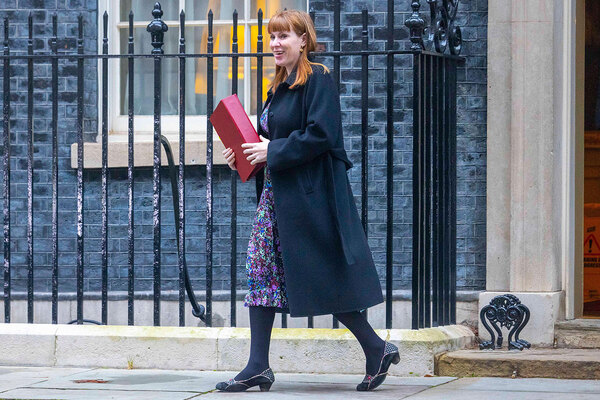RSH quarterly survey: total interest cover falls to record low
Interest cover is at record lows and is expected to drop further as registered providers face “significant economic headwinds” alongside higher repairs spend, a report from the English regulator has said.
According to the latest quarterly survey from the Regulator of Social Housing (RSH), average interest cover from operating cashflows, excluding sales, was 102 per cent in the 12 months to December for providers.
This was the lowest level on record since the data began to be collected in 2015 and represents a drop from 111 per cent in the 12 months to September. The average 12-month interest cover over the past three years has been 131 per cent.
The RSH published its latest survey for the three months from October to December 2022 on Thursday, 2 March.
The regulator’s previous quarterly survey predicted interest cover would deteriorate to a record low.
Providers expect to see average interest cover drop further, to 93 per cent, over the next year.
The RSH said it was “evident that levels of interest cover have deteriorated and are set to reduce again over the next 12 months”, as interest rates continue to rise and social landlords continue to invest in their stock.
It follows a move by the RSH to downgrade the viability rating of around 50 housing associations, from V1 to V2, over the past few months. The majority of these were because of social landlords increasing investment in their existing stock, which, coupled with inflation and interest rates, reduces their capacity to respond to adverse events.
The RSH said: “Increasing interest rates and continued investment in existing stock will inevitably result in weakened financial performance and reduced capacity to manage downside risk.
“The regulator will continue to monitor the financial viability of providers forecasting low interest cover.”
Interest cover, based on operating cashflows excluding sales, stood at 91 per cent in the quarter to December, down from 105 per cent in the previous quarter.
However, this was higher than the forecast of 84 per cent. The RSH said this improvement in interest cover compared with its forecast is mainly attributable to a £184m underspend in capitalised repair and maintenance costs, partially offset by a reduction in net cashflows from operating activities of £86m.
Investment in existing stock
Providers spent £1.7bn in total on repairs and maintenance in the quarter to December, eight per cent higher than the previous quarter, but nine per cent below the forecast.
Expenditure on capitalised repairs reached £678m, 17 per cent higher than the previous quarter’s £581m. This is only the second time since cashflow data was first collected in 2015 that capitalised repairs and maintenance spend has exceeded £600m in a single quarter.
Expenditure is forecast to increase to £933m in the last quarter of the financial year.
Providers have reported costs being affected by inflation, a high demand for repairs that has been compounded by media coverage of damp and mould issues in the sector, and additional investment for building safety and energy efficiency.
The expected further reduction in interest cover results from an increase in capitalised repairs and maintenance expenditure of £900m (35 per cent) over the 12-month forecast period, combined with an increase in net interest payable of £400m (12 per cent), largely due to the higher interest-rate environment.
This is partly offset by £1bn in increased net cashflows from operating activities. Including both capital and revenue works, total expenditure on existing stock is forecast to reach £7.7bn over the next 12 months. However, the RSH said providers reported that material and labour shortages continued to cause delays to repair programmes.
A number of providers have obtained loan covenant waivers in response to increasing investment in existing stock.
The RSH said 26 reported having agreed a waiver to exclude the exceptional costs of building safety works from loan covenant calculations, and 22 said waivers were being reported in respect of energy efficiency or decarbonisation works.
The regulator has “sought additional assurance from providers where investment in stock appears to be insufficient and will continue to engage where appropriate”.
Challenging operating environment
The RSH said the quarter to December 2022 continued to be a “challenging and turbulent period” for providers, with inflationary pressures and economic uncertainty continuing to affect the housing sector.
It said, following the seven per cent social rent cap announcement in November, several providers revised their forecasts.
The regulator said: “With continued pressures of rising inflation, the restriction on annual rent increases will add to the burden of growing costs and have an impact on providers’ liquidity.
“As risks begin to crystallise within the operating environment, providers will have reduced financial flexibility to respond to further challenges.
“Providers are expected to closely monitor and update forecasts to reflect ongoing inflationary and interest-rate risks, along with the potential for increasing arrears as cost of living pressures impact upon tenants.
“Providers must be able to identify areas where covenant headroom or liquidity may be restricted and ensure that contingency plans and mitigations remain robust.”
Finance and liquidity
A total of 29 providers arranged new finance during the quarter, up from 26 in the previous quarter.
The sector agreed £3.4bn in new finance in the three months to December, a rise from £1.4bn in the previous quarter, which was the lowest for six years.
New bank facilities reached the highest level in six years and new capital market facilities the lowest in over three years.
The sector’s total agreed borrowing facilities increased by £2.1bn over the quarter, to reach £121.8bn at the end of December.
Of the £121.8bn total, £60.2bn (49 per cent) related to bank loans and £57.7bn (47 per cent) to capital market funding.
Total cash and undrawn facilities available within the sector totalled £35.2bn at the end of December, up from £34.9bn in September.
This would be sufficient to cover the forecast expenditure on interest costs (£4.1bn), loan repayments (£3.1bn) and net development for the next year (£14.4bn).
Loan repayments of £600m were made in the three months to December, a drop from £800m in the previous three months.
Over the next 12 months, repayments are forecast to reach £3.1bn, compared with a forecast of £2.7bn made in September.
Mark-to-market exposure on derivatives remains low, the report said, with current gross exposure of £300m, up from £200m in September.
Development and sales
Providers invested £3.8bn on building and acquiring new homes in the quarter, seven per cent above forecasts for contractually committed schemes.
Investment of £16.6bn is forecast for the next 12 months, a drop from a £17.3bn forecast in September, with £11bn contractually committed.
Development schemes continue to be delayed due to supply chain issues affecting the availability of materials and labour, and market volatility has led to prolonged contract negotiations.
Market sale completions rose by 28 per cent compared with the previous quarter, and affordable homeownership (AHO) completions increased by 16 per cent.
The 18-month pipeline for AHO units stands at 37,325 and 8,434 for market sales, the report said.
AHO sales rose slightly from 4,345 in September to 4,445 in December, while market sales dropped from 1,313 to 1,100 over the same period.
Market sales totalled £497m, lower than the quarterly average achieved over the past three years, while AHO sales reached a record £565m.
Will Perry, director of strategy at the RSH, said: “Social housing providers continue to attract private finance and invest heavily in new and existing homes.
“But they are facing significant economic headwinds which, combined with higher spend on repairs, are impacting on the sector’s finances.
“Providers need to take a strategic approach to managing these risks, so they can continue to deliver their objectives and ensure that their tenants are living in safe, good-quality homes.”
Sign up for Social Housing’s weekly news bulletin
Social Housing’s weekly news bulletin delivers the latest news and insight across finance and funding, regulation and governance, policy and strategy, straight to your inbox. Meanwhile, news alerts bring you the biggest stories as they land.
Already have an account? Click here to manage your newsletters.
RELATED








